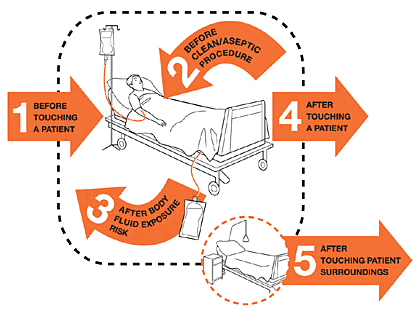Strict compliance with hand hygiene regulations is one of the most effective way to prevent the spread of infections and diseases. Not adhering to thorough handwashing routines is a substantial problem, especially in the hospital context, where the World Health Organization (WHO) defines the key moments when health-care workers should perform hand hygiene as the “5 moments for hand hygiene“.
There is increasing interest in providing longitudinal assesment of hand hygiene practices in hospitals. Although this is a criterion against which hospitals in Victoria and Australia are accredited, it remains a manual process. The technology we propose to develop in this project can potentially be adopted by any hospital in Australia, and potentially globally.
The goal of this project is to use sensors attached to the user’s body, such as inertial measurement units (IMU) and electromyography (EMG), or placed into the environment, such as infra-red cameras and location beacons, to detect and track episodes of handwashing. The data from these sensors is then used to build a recognition model for handwashes and hand rubs, which can detect each step within the respective procedure and tracks frequency and thoroughness.
Current audits in hospital entail a person monitoring the staff’s compliance with the World Health Organization (WHO) regulations, which is costly, infrequent, and prone to inducing observation biases. By automating the compliance monitoring this research contributes to making hospital operations more efficient and reduce the risk of spreading infections.

recommended by the World Health Organisation.